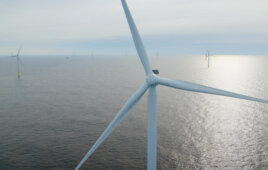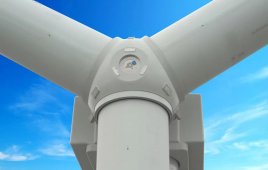GREG ALVAREZ, Writer and Content Manager for AWEA
Kansas has long been one of America’s wind power leaders; its installed capacity has doubled four times in the last 10 years, and it’s about to double again. In 2015, wind supplied nearly 24% of the state’s electricity, and according to Gov. Sam Brownback, that number will exceed 30% in 2016.
And reaching 50% may not be far off.
Speaking at the American Council on Renewable Energy’s (ACORE) recent Renewable Energy Finance Forum, Gov. Brownback said he believes generating half of Kansas’s electricity using wind is “doable” and he expects it to happen. He noted that Kanas is “going to be aggressively recruiting and working with [wind] companies,” and working on transmission build-out to better enable the wind industry to grow even faster.
“Building a world-class wind industry in Kansas has demonstrated that a market-driven approach to renewable energy can and will benefit industry and consumers alike,” he explained.

In 2015, wind supplied nearly 24% of Kansas electricity, and according to Gov. Sam Brownback, that figure will exceed 30% in 2016, making 50% easily reachable.
Kansas has proven it can quickly develop its wind power potential. In 2011, wind created only 8% of the state’s electricity, only a third of what it does today.
This growth has been good for the state’s families and businesses, helping them keep more money in their pockets while supporting up to 6,000 well-paying jobs. Through 2050, wind could save consumers over $1.6 billion on their electric bills, on top of nearly $4 billion in savings resulting from protection against conventional fuel price fluctuations.
Continuing to develop its wind resources will bring more of these benefits to Kansas. Growing wind energy to supply 50 percent of its electricity will attract over $4.5 billion into the state’s economy, according to ACORE.
“We’ve seen massive investment [in wind] and we want to see that continue to take place and grow even faster,” Brownback said, recognizing how wind power has helped strengthen communities throughout the state.
Filed Under: News, Projects





